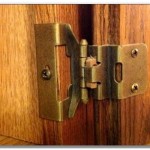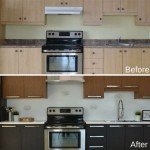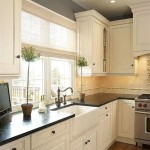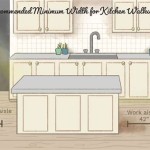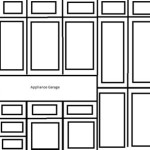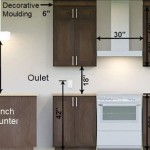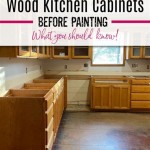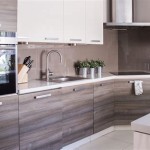Shoe Moulding Kitchen Cabinets: A Comprehensive Guide
Shoe moulding, also known as quarter round or base shoe, is a versatile trim piece often used to provide a finished look where baseboards meet flooring. While typically associated with baseboards, shoe moulding finds application in a variety of areas, including kitchen cabinets. Its strategic use within kitchen cabinetry can enhance aesthetics, functionality, and overall longevity. This article will explore the application of shoe moulding to kitchen cabinets, covering its various uses, installation techniques, advantages, and considerations.
Shoe moulding is a thin, convex trim that runs along the bottom edge of baseboards, concealing any gaps or imperfections between the baseboard and the floor. It is usually made of wood, MDF (Medium-Density Fiberboard), or PVC (Polyvinyl Chloride). The profile is generally rounded, providing a smooth transition between the two surfaces. This simple design makes it adaptable to a wide range of applications beyond its traditional use. In the context of kitchen cabinets, shoe moulding can be utilized in various ways to resolve aesthetic and practical challenges.
Aesthetic Applications of Shoe Moulding in Kitchen Cabinets
The primary reason for incorporating shoe moulding into kitchen cabinet design is often aesthetic. It adds a subtle, refined detail that can elevate the overall look of the kitchen. Here are some specific aesthetic applications:
Concealing Gaps and Imperfections: One of the most common uses of shoe moulding is to cover up gaps or unevenness where the cabinet base meets the floor. Kitchen floors are rarely perfectly level. Even with careful installation, slight variations in floor height can result in unsightly gaps. These gaps can detract from the visual appeal of the cabinets and allow dirt and debris to accumulate. Shoe moulding provides a clean, consistent line, effectively hiding these imperfections and creating a seamless appearance.
Adding a Decorative Element: Shoe moulding can be used to add a decorative touch to plain, slab-front cabinets. The small profile provides a subtle visual interest without being overly ornate. It can be painted or stained to match the cabinets, creating a cohesive look, or it can be painted in a contrasting color to add a pop of visual interest. This is particularly effective in modern or minimalist kitchens where the aim is to add subtle details that enhance the overall design.
Creating a Finished Look: Even when gaps are not a significant concern, shoe moulding can simply provide a more finished and polished appearance. It acts as a visual grounding element for the cabinets, making them appear more substantial and integrated into the room's design. This is especially true for cabinets that are installed directly on the floor without a separate toe kick. The shoe moulding provides a neat transition between the cabinet and the floor surface.
Coordinating with Existing Trim: The use of shoe moulding on kitchen cabinets can help tie the cabinets into the overall architectural style of the room. If the room already features shoe moulding along the baseboards or other trim elements, using a similar profile on the cabinets will create a sense of visual harmony and cohesion. This is particularly important in older homes where existing trim profiles are an integral part of the home's character.
Functional Applications of Shoe Moulding in Kitchen Cabinets
Beyond aesthetics, shoe moulding can serve several functional purposes in kitchen cabinet installations. These applications contribute to the durability, ease of maintenance, and overall usability of the cabinets.
Protecting the Cabinet Base: The bottom edge of kitchen cabinets is particularly vulnerable to damage from moisture, spills, and scuffs from cleaning equipment. Shoe moulding acts as a protective barrier, shielding the cabinet base from these potential hazards. This is particularly important in kitchens where splashes and spills are common. By preventing water from seeping into the cabinet material, shoe moulding helps to prolong the lifespan of the cabinets and prevents issues like swelling, warping, and mold growth.
Facilitating Cleaning: The small channel created by the shoe moulding along the floor can make cleaning easier. It provides a defined edge that prevents dirt and debris from accumulating directly against the cabinet base. This allows for easier sweeping, vacuuming, and mopping, making it easier to maintain a clean and hygienic kitchen environment. Without the shoe moulding, dirt can get trapped in the small gap between the cabinet and the floor, making it difficult to remove.
Concealing Wiring and Plumbing: In some kitchen installations, wiring or plumbing may need to run along the base of the cabinets. Shoe moulding can be used to subtly conceal these elements, providing a cleaner and more organized appearance. This is particularly useful in situations where it is difficult or impossible to run the wiring or plumbing within the walls. The shoe moulding effectively hides these unsightly elements, preventing them from becoming a visual distraction.
Providing a Surface for Caulking: The joint where the cabinets meet the floor is a common area for drafts and insect entry. Shoe moulding provides a solid surface against which to apply caulk, creating a tight seal that prevents air leaks and pest infestations. This is particularly important in older homes where there may be gaps and cracks in the flooring. The caulk seals the gap between the shoe moulding and the floor, providing an effective barrier against drafts and pests.
Installation Considerations and Techniques
The proper installation of shoe moulding is crucial to achieving the desired aesthetic and functional benefits. Incorrect installation can result in a poorly finished look, reduced protection, and even damage to the cabinets or flooring. Here are some key considerations and techniques for installing shoe moulding on kitchen cabinets:
Material Selection: The choice of material for the shoe moulding depends on several factors, including the style of the cabinets, the overall kitchen design, and the intended use. Wood is a classic choice that provides a warm, natural look and can be easily stained or painted to match the cabinets. MDF is a cost-effective alternative that is resistant to warping and splitting. PVC is a durable, waterproof option that is ideal for kitchens that are prone to moisture. Consider the specific needs of the kitchen environment when selecting the material.
Preparation: Before installing the shoe moulding, it is important to prepare the surface of the cabinets and the floor. Clean the area thoroughly to remove any dirt, dust, or debris. If there are any existing gaps or imperfections, fill them with wood filler or caulk. Make sure the surface is smooth and even to ensure a proper fit for the shoe moulding.
Cutting and Fitting: Accurately measuring and cutting the shoe moulding is essential for a professional-looking installation. Use a miter saw to make precise cuts at the corners. For inside corners, use a coping saw to create a smooth, seamless joint. Test the fit of each piece before attaching it to the cabinets to ensure that it is properly aligned and fits snugly against the floor.
Attachment: There are several ways to attach shoe moulding to kitchen cabinets. One common method is to use finishing nails or brad nails. Drive the nails through the shoe moulding and into the cabinet base, spacing them every few inches. Countersink the nails and fill the holes with wood filler. Another option is to use construction adhesive in conjunction with nails. The adhesive provides a stronger bond and helps to prevent the shoe moulding from coming loose over time. Be careful not to damage the cabinet or the flooring during the installation process.
Finishing: Once the shoe moulding is installed, it needs to be finished to match the cabinets. If using wood shoe moulding, sand it smooth and apply a primer. Then, paint or stain the shoe moulding to match the cabinet finish. If using MDF or PVC shoe moulding, use a primer that is specifically designed for these materials. Apply two coats of paint for a durable, long-lasting finish. Caulk the gap between the shoe moulding and the floor to create a watertight seal. This will prevent water from seeping under the cabinets.
Alternatives to Shoe Moulding: While shoe moulding is a common and effective solution, there are alternative trim options that can be used to achieve similar results. Quarter round moulding, which is similar to shoe moulding but with a slightly larger profile, can be used to cover wider gaps. Base cap moulding, which is typically used on top of baseboards, can also be used on kitchen cabinets to add a decorative touch. The choice of trim depends on the specific design aesthetic and the desired level of detail.
In conclusion, incorporating shoe moulding into kitchen cabinet design offers a multitude of benefits, ranging from aesthetic enhancement to functional protection. Careful consideration of material selection, installation techniques, and finishing methods will ensure a professional and long-lasting result. Whether the goal is to conceal imperfections, add a decorative element, or protect the cabinet base, shoe moulding is a versatile and practical solution for kitchen cabinet installations.

Hampton Bay Designer Series 0 625x96x0 625 In Shoe Molding White Amsh Wh The Home Depot

Hampton Bay 91 5 In W X 0 75 H Shoe Molding Brindle Kamtx Bdl The Home Depot

Primed Shoe Molding Bella Tucker

Hampton Bay 91 5 In W X 0 75 H Shoe Molding Dove Gray Kamtx Dv The Home Depot

9 Crown Molding Types To Raise The Bar On Your Kitchen Cabinetry Worthington Millwork

5 Molding Styles That Customize Your Cabinetry

Adding Molding To Cabinets Make Them Look Built In Young House Love

Oops Shoe Molding Bella Tucker

Blog Talk Does Your Quarter Round Match Cabinets Kitchen Rounded

Molding Types For Kitchen Cabinetry
Related Posts

